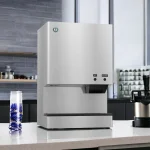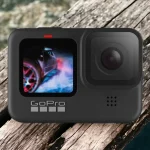Introduction to RV Water Filters
What is an RV Water Filter?
An RV water filter is used to purify the water coming into the recreational vehicle sourced through all sorts of sources. But with the filters, the water you drink, cook with, and wash is a must-now pass through the filtration process to be free of impurities such as sediment, chlorine, heavy metals, bacteria, and other contaminants.
Why Do You Need an RV Water Filter?
- Health and Safety: Free of any of health related filths and germs your water of an RV.
- Better Taste and Odor: The filter sand eliminates any chlorine and chemicals that result is a foul smell or taste in the water, making it even tastier.
- Protects Plumbing and Appliances: Slows sediment and particulates in your RV that can foul your appliances and plumbing system.
- Convenient: time-saving, you can easily attach to any water source regardless of the condition
Types of RV Water Filters
- In-line Filters: Constructed on one end that mounts solidly on the water hose, these are very small filters. They are easy to install, and are perfect as a first step filter.
- Canister Filters: These have larger filter cartridges which are available inside a canister and thereby they undergo the middle filtration process. Either they are externally placed or mounted on the vehicle.
- Reverse Osmosis Systems: These are advanced systems that filter the smallest contaminants as well. These are some rather complex systems and they are mostly the go-to survivors among all water purifiers, if you demand the highest quality water.
- Sediment Filters: Effective with sediment sized up to heavy sand and rust Typically used as pre-filter in multistage filtration process.
Key Features to Consider
- Filtration Capacity: Volume of water filtered and subsequently passing the filter, before the filter has to be changed.
- Micron Rating: Size of particulates removed High Micron Rating = Less dense media Low Micron Rating = Fine filter influences higher levels of removal.
- Flow Rate: Flow rate of the water through the filter – This lets you know how the filtered water will flow into your containers.
- Ease of Installation: Believe it or not, I do have plug-and-play versions – because there are other kind of filtera you have to modify and those can be reaaaaly complicated to mod in many cases.
- Filter Life: How long until the filter needs replacing This is on a per litre basis offering an exact measure based on water quality and usage
Maintenance and Replacement
You must perform regular maintenance and renew the cartridges on time to keep the device performing at its best. Follow manufacturer-provided schedule for replacements and maintenance steps.
5 Best RV Water Filters
1.Flexible hose protector by Camco TastePURE
- Description: A very effective model from Camco, the TastePURE Water Filter, truly reduces the bad taste, odor, chlorine, and sediment levels in drinking water. It features a 20-micron sediment filter and includes a kink-guard hose protector for added durability.
- Pros: Easy installation, removes bad taste and odor, flexible hose protector included.
- Cons: The filters may need to be replaced frequently, depending on water quality.
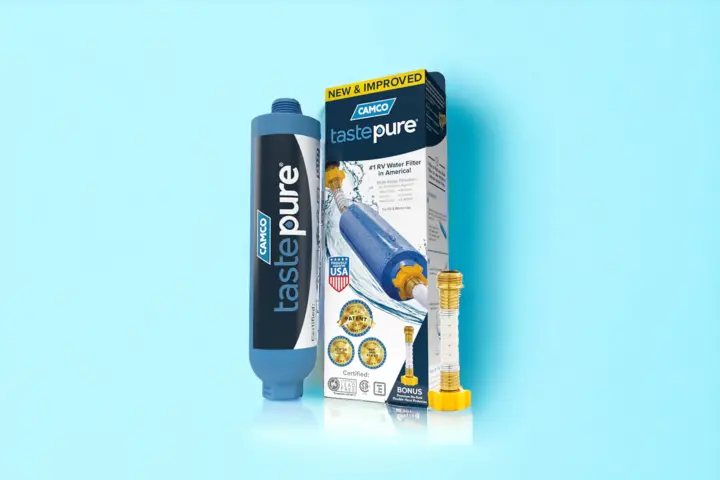
2. Waterdrop Inline RV Water Filter
- Description: Culligan RV-800 Exterior Water Filter for RV use. Filters sediment, chlorine, bad taste, and odor. Comes with connection hose.
- Pros: High-quality filtration, easy to install, and durable construction.
- Cons: Size may be too large for some setups.
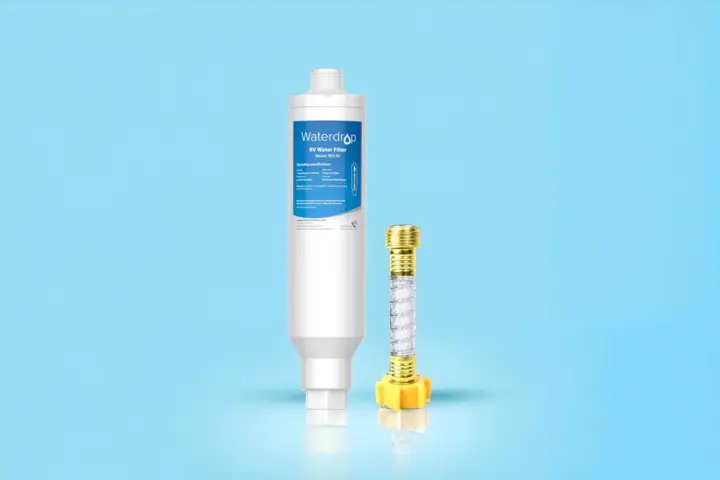
3. Clearsource Premium RV Water Filter System
- Description: The Clearsource Premium with twin canister filtration system and 0.2-micron filter for bacteria and cyst removal with a filter to substantially reduce chlorine and enhance the taste.
- Pros: High-quality filtration, long-lasting filters with good efficiency of water flow.
- Cons: More expensive, more volume that becomes necessary for adequately holding enough additional storage.
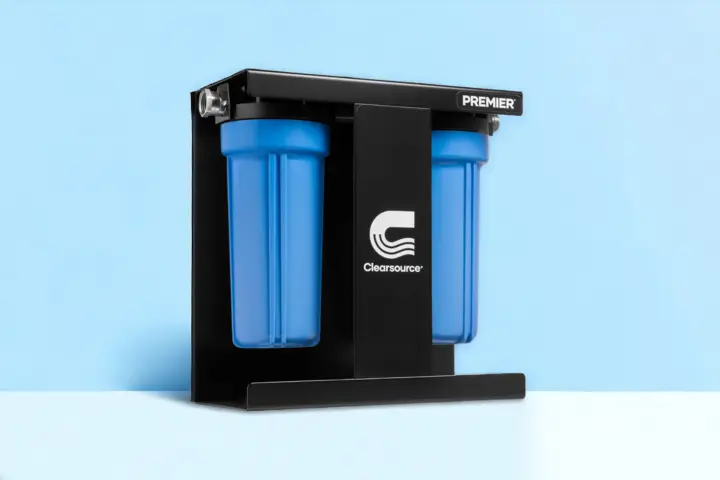
4. AQUA CREST Inline RV Water Filter
- Description: AQUA CREST RV Inline Water Filter provides clean, safe water by reducing chlorine, heavy metals, sediment, and other impurities. It very conveniently affixes to a common water hose, thereby ensuring it supplies clean, safe water.
- Pros: Cheap, easy to install, effective enough to remove many impurities.
- Cons: Under low-quality water conditions, the cartridges may need to be replaced more frequently.
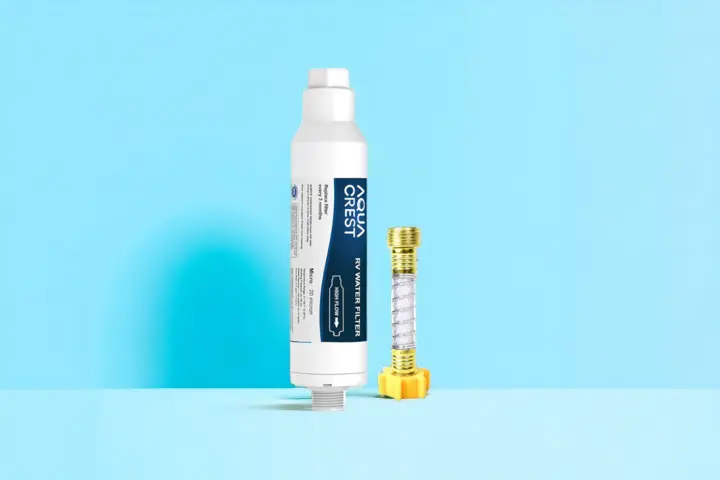
5. Culligan RV-800 Outdoor Pre-Tank RV Water Filter
- Description: This filter can be utilized in a number of ways and can remove chlorine, fluoride, heavy metals, and other impurities. It contains a KDF and activated carbon filtration system.
- Pros: Multi-stage filtration, compact design, easy to install.
- Cons: Somewhat costly compared to basic models and may sometimes require backflushing to deliver full performance.
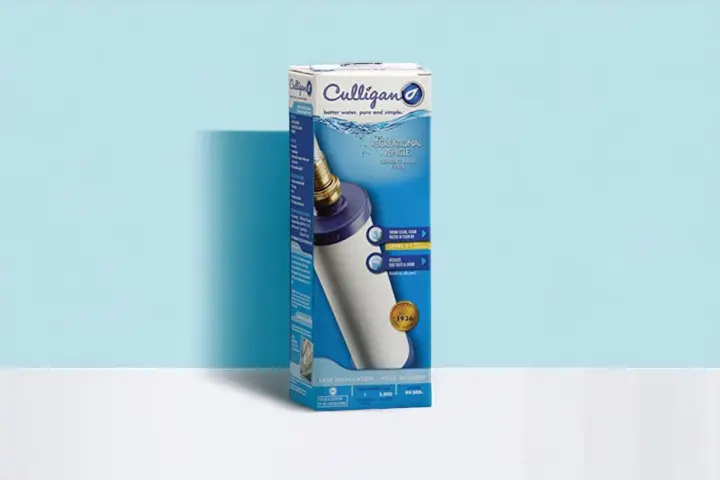
Installation Guidelines for RV Water Filters
Tools and Materials Needed
- RV Water Filter Kit
- Adjustable wrench or pliers
- PTFE tape
- Bucket or container in case a water is spilled
- Hose fittings, except where filter is integral
Step-by-Step Installation Guide
For Inline Water Filters
- Turn Off Water Supply: Make sure there is no water passing through the RV, as if a flow is happening, it will spill out during the installation and after..
- Hose Protector: Secure the filter inlet with a hose protector able to twist This will avoid any kinking and extend the life of the filter.
- Threaded Connections with Teflon Tape: Using Teflon tape, tape around the threads of the hose connections so no water leaks.
- Connect Filter to Hose: Install the inline filter in the water hose. These filters have directional arrows on them that show the direction of flow. Nicely re install in order to water can once more go through the filter for the very same path for the arrows.
- Attach the opposite phrase to the water inlet of your RV.
- Water Supply: Slowly open your water lines, and check for leaks tightening fittings as you go.
- Back Flush the Filter: Pass water for a few minutes so that the carbon particles that are not tightly attached rinse off, it activates the carbon filtration.
For Canister Water Filters
- Choose site for installation: Best to go with the site near the RV inlet water where the filter canister is going to be installed for ease of placement.
- Install Canister: Now that the filter canister is in place, secure it to the mounting bracket; and position it on a sturdy surface. Provide for future accessibility, for filter adjustment in the filter.
- Connect Inlet and Outlet Hoses: Use Teflon tape around the threads when securing the hoses to the canister inlets and outlets.
- Connect to Water Inlet: One end of the water source from the building ending will attach to the inlet hose, the other end to the RV water system ending.
- Turn Water Supply On: Turn on the water supply slowly and look for leaks; plug the connections in each place.
- Flush the Filter: Run at least a few gallons of water through the filter system to flush out all the lose particles and start the media in the filter.
For Reverse Osmosis Systems
- Choose Installation Location: Choose a location for the RO system underneath the sink or in a cabinet where the unit can connect to a water line and a drain line.
- Install Storage Tank and Filter Assembly: Install the storage tank and filter assembly where the total system is to be installed as determined earlier. Fasten with provided mounting brackets and screws
- Attach Water Supply Line: Connect with the water supply line to the inlet valve nipple of unit and check for the total connection using the Teflon tape on the threads.
- Attach Drain Line: The drain line from the softener next to the drain pipe of the sink and prevent any back flush, and the air gap of the drain pipe of the sink.
- Faucet Installation: If necessary, drill a hole through the sink or counter and install the RO faucet. Connect faucet to RO system.
- Turn On Water Supply: Turn on the water supply slowly Inspect every connection for leaks. Tighten where necessary.
- Flush and Test: Turn the system on and run the first few gallons of water through it. This is done so that the system is cleared from dust dirt particles and removes all impurities from the system.
Maintenance Tips
- Check for any leakages: Check the joints time to time to avoid any leakage.
- Replace Filters when Required: To keep the quality of water, change filters as per the manufacturer’s suggested.
- System Sanitizing: Sanitize the system, regularly, and especially after that RV is sitting idle.corpora.
Follow these RV water filter installation and maintenance instructions, and you will be guaranteed to have cleaner and healthier water from your recreational vehicle’s filter for the entire trip.
Frequently Asked Questions (FAQ) About RV Water Filters
1. Why do I need a water filter for my RV?
- Answer: A water filter is a device which allows water for use in or by your RV to be clean, potable, and free from harmful contaminants, for example, bacteria, sediments, likes of chlorine, and heavy metals; hence, improving taste and odor of water and protection from damage of your RV’s plumbing and appliances.
2. What types of contaminants can RV water filters remove?
- Answer: RV water filters remove varying amounts of expected contaminants, which include sediment, chlorine, lead, bacteria, cysts, pesticides, volatile organic compounds (VOCs), and other impurities, with corresponding filter types and media.
3. How often should I replace my RV water filter?
- Answer: Depending on the filter, water quality, and application, normally inline filters should be replaced every 3-6 months and canister filters and reverse osmosis systems last longer but still should be replaced according to the manufacturer’s specifications.
4. Can I use a regular household water filter for my RV?
- Answer: Few of them can be used for an RV. Generally speaking, it is more recommended that one uses water filters meant for RV use. They are made to withstand variable water pressures and conditions one is exposed to on the journey.
5. How do I install an RV water filter?
- Answer: Installation varies by filter type. Inline filters are just a bit easier; you just connect them in-line with the water hose. Canister filters and RO systems may require somewhat more complicated installations, including the mounting of the filter, running the inlet and outlet hoses, and providing a good seal for the Teflon tape. It is always important to install per the manufacturer’s instructions.
6. Can I use an RV water filter with any water source?
- Answer: Yes, RV water filters have been made in flexible ways so that they can be used in city water hookups, campground faucets, and even well water. Their efficiency may vary with where the water is from.
7. Do RV water filters affect water pressure?
- Answer: Some water filters, especially those with very fine media for filtration, may slightly reduce the water pressure. Special filters with a high flow rate are also available for the RV owner who is concerned about the maintenance of their water pressure.
8. What is a micron rating, and why is it important?
- Answer: It is a size rating of particles that can be removed with the filter. The lower the micron rating, the finer the filtration. For example, a 0.5-micron filter removes finer and smaller particles as compared to a 20-micron filter and gives the intended filtration.
9. Is it necessary to have multiple stages of filtration in my RV water filter?
- Answer: Multi-stage filtration systems provide a better water treatment service as these will address different contaminants at different stages. For example, a system may contain a sediment filter, carbon filter, and KDF filter to remove sediment, chlorine, and heavy metals, respectively, in the said order. While this type of process is not generally necessary, multi-stage processes give water a better quality.
10. Can I use my RV water filter for drinking water?
- Answer: Yes, RV water filters are made to purify water so it becomes safe for drinking, cooking, and just about all common usages. Make sure the filter is able to clear out any contaminants normally found in potable water, such as, but not limited to, bacteria, chlorine, and heavy metals.
11. What should I do if my RV water filter is leaking?
- Answers: Tighten and seal all connections and fittings using Teflon tape. Carefully check the filter housing for any damaged parts, especially if there is any O-ring or seal being fitted. Replace any damaged parts. If that does not work, the manufacturer’s troubleshooting guide can be referred to or customer service can be called.
Knowing and answering these common questions will give you the ability to decide on the purchase and also the installation of the RV water filter, ensuring you get a reliable and clean supply of water while traveling.

